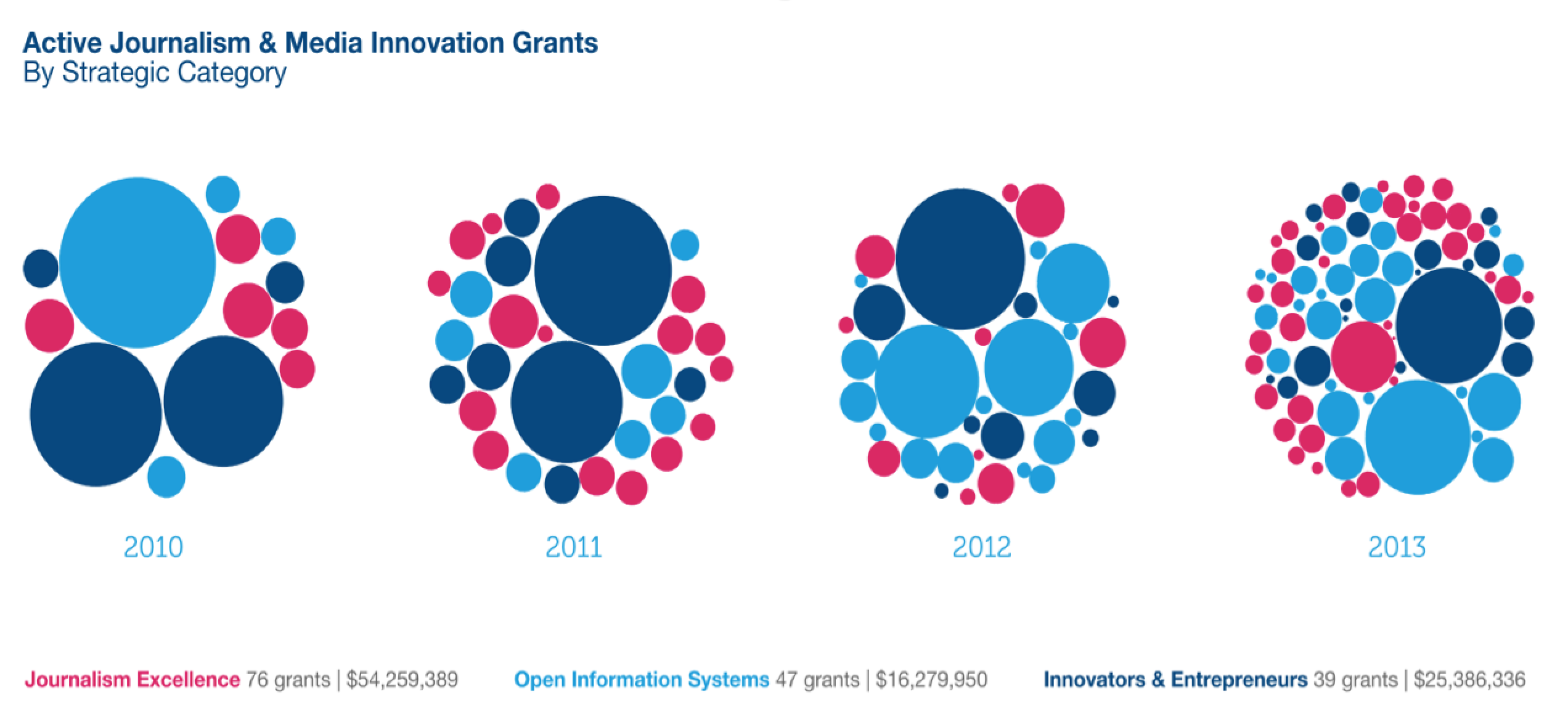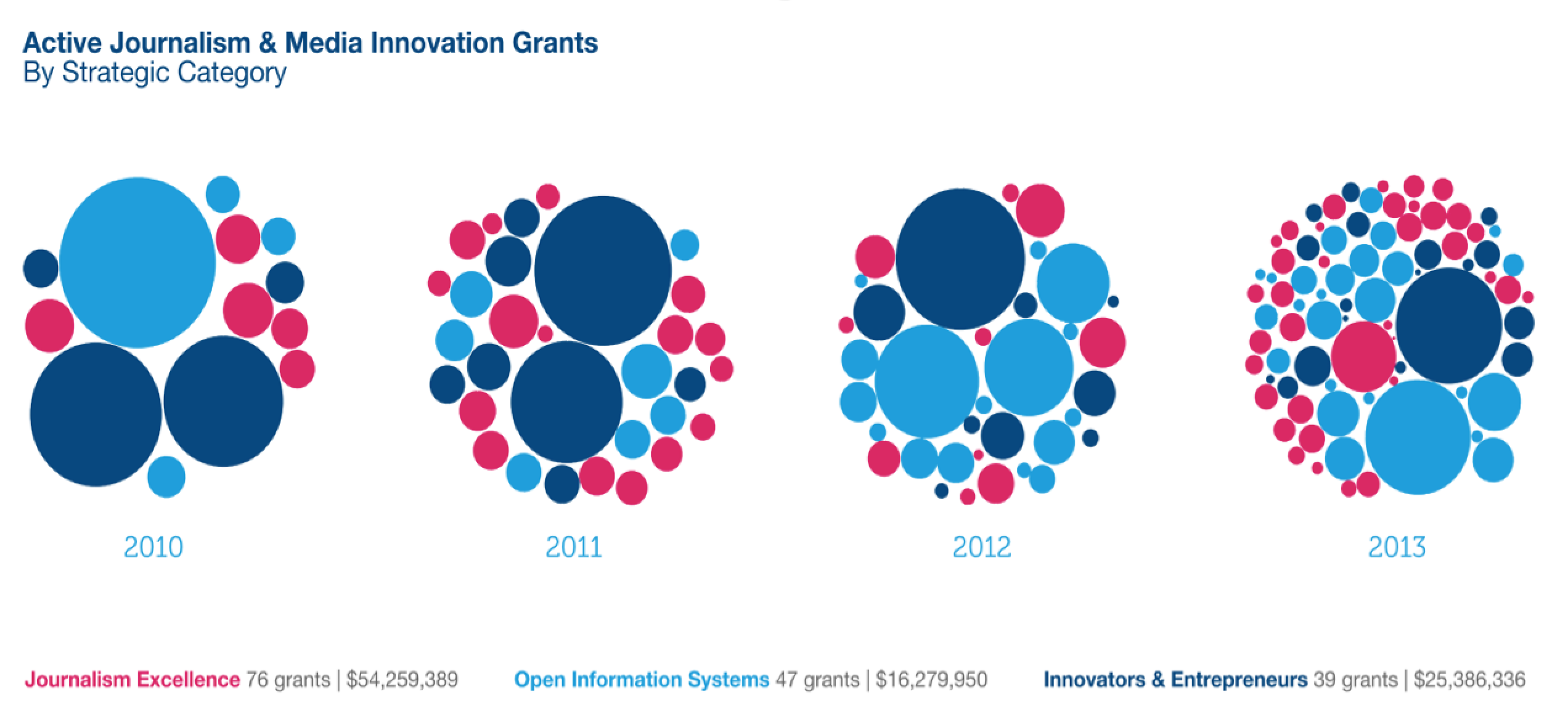
Ibargüen: How Knight seeds innovation
From Knight Foundation’s offices in downtown Miami, I can see the remains of the former headquarters of Knight Newspapers and, later, Knight Ridder. The building is being torn down now, but that’s where our founders, Jack and Jim Knight, built what was, in their day, the largest newspaper company in America. Related Link
“Knight focuses on building better communication with grant recipients” by Michael Bolden on Knight Blog
Knight Newspapers no longer exists, but the brothers’ philosophy — that informed and engaged communities are the key to a healthy democracy — still guides us here at the foundation that they left behind. They believed in the power and capacity of an informed citizenry to determine their own interests.
How do we make that concept reality? We invest in new ideas that have the power to transform lives. Through this catalytic funding, we provide the seeds for change.
We don’t think of what we do as charity. We are social investors and, as investors, we demand a return on our investment in the form of an improved community. Like good investors, we focus in areas of importance to the Knight brothers: journalism and media innovation, communities and the arts. Over the past decade, each of those fields has been disrupted. Technology has produced new expectations and possibilities in each, while rapid change has underlined the importance of constant innovation. All of this represents opportunity for a foundation willing to fund new ideas, take risks and share the learning.
This freedom to experiment underpins our work. It allows us to fund promising ideas and to share what we learn and help achieve sustainability or move on.
The Internet shook up journalism and, consequently, we changed our grantmaking to meet the market, engaging in the search for questions with ever-changing answers: In the 21st century, what will informed and engaged communities need? How can we remain true to the journalistic values of the Knight brothers? We still need better answers to basic questions: What types of devices will people use? How will they use them? How will they value the information learned through that technology? When we know that, we can establish “best practices” with authority. Until then, we will continue to exercise our freedom to experiment in the search for the best ideas.
In many cases, that approach has led us to make more and smaller grants. This agility allows for more iteration. When ideas fail, we can all learn from them. When they succeed, we can all benefit; that seed we sow is something that everyone in the industry — the innovators and even those who sometimes lag behind — can cultivate to move their work in new directions and help people become better informed about the world around them. Take a look at the change in our journalism and media innovation grantmaking in just four years. You can see the shift to more experimentation, to capturing more ideas, to opening up more possibilities for the future.

The disruption in our communities is no less important. Technology has broken down barriers and the potential for engagement by people has never been greater. Our funding can provide the spark of innovation. We can take the initial risk with a small, catalytic grant. If we can prove something works, perhaps the government, which is more risk-averse but has a lot more money than we do, can continue that funding.
We promote the recruitment, development and retention of talent, and seek a commitment to place. We employ every tool available, from the funding of neighborhood programs to city-wide initiatives, convenings of thought leaders to publication of findings. In all, the key to all of our funding in community is the authenticity of the local idea that fits the local place. We believe that is the way to stay true to Jack Knight’s passionate endorsement of “the people” determining their own interests.
Our work in the arts follows the same story arc. Arts institutions are essential in communities and we are pleased to fund their work, especially their outreach through the use of technology. What has resulted in an explosion of creativity, however, has been the Knight Arts Challenge. This form of catalytic funding in four (so far) “Knight communities” continually uncovers new ideas from people we would otherwise never know. The contest’s simple rules (the idea must be about art in that community and the proponent must match Knight’s contribution) has the demonstrated potential to fill the streets of our cities with art, music, poetry and the beauty of collaboration. It gives more artists the ability to take risks. It exposes more work to other funders and to the community at large; the resulting chorus of new voices lifts the soul of our cities, enriching humanity.
The belief that we can create lasting change by embracing risk, and sharing the learning, underpins our funding. That allows us to fund programs, people and ideas that will lead to informed and engaged communities. And that is the legacy of John S. and James L. Knight.
Alberto Ibargüen is president of Knight Foundation.
Recent Content
-
Artsarticle ·
-
Artsarticle ·
-
Artsarticle ·

